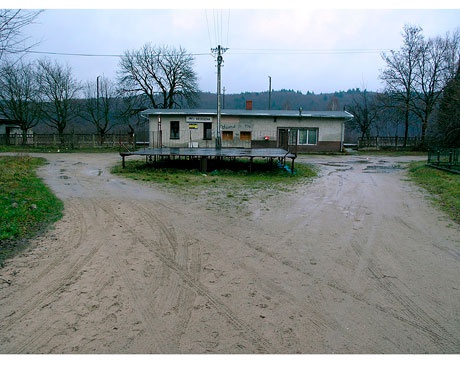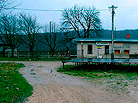replikantki (3) — minimalne poprawki — Alicja Karska i Aleksandra Went

„Replikantki” to cykl wystaw w Małej Przestrzeni prezentujący twórczość młodych polskich artystek. Tytułowe określenie ma wpisany w siebie rewolucyjny potencjał, generowanie nieznanych wartości, odwracanie przeciwko systemowi, który je stworzył. Miarą prawdziwości przywołanych historii staje się niezgoda na sformatowanie do racjonalnych ram i sztywnych, logicznie uzasadnionych podziałów, potrzeba mocnego upodmiotowienia kobiety-autorki w strategiach lektury. Odkrywanie sensu tkwiącego w szczególe staje się bazą do stworzenia nowego języka, w którym artystki nie występują w roli outsiderów, ale znajdują miejsce dla mówienia o sobie, w pewnym przesunięciu do obowiązującego fallogocentrycznego porządku. Sięgając do intymnych doświadczeń zatracają się w tekstach, rozłożone w toksycznych wydzielinach własnej sieci.

„Replikantki” — intymne przekazy artystek (teksty, prace, idee) skumulowane w publikacji Książka została zaprojektowana jako dokumentacja cyklu wystaw, który odbywał się w Galerii Sztuki Współczesnej BWA w Katowicach w...

replikantki (4) — język do lizania — Justyna Gruszczyk i Bianka Rolando Joseph Beuys w jednej ze swoich legendarnych akcji szepce coś do ucha martwego zająca, którego nosi na rękach. Nie wiadomo co mówi. Zgodnie...

replikantki (2) — cieplarniane warunki — Natalia Bażowska, Kinga Bella, Magdalena Starska, Tatiana Wolska Drążenie autorskich wizji oprócz precyzyjnych narzędzi wymaga cierpliwości i uwagi, jeśli lektura jest przeprowadzana z biegu wytraca sens....

replikantki (1) — znieczulenie — Dorota Buczkowska „Lilith”, „Interror”, … Znieczulenie znosi świadomość, ból i odruchy obronne. Jako zabieg wynika z potrzeby utwardzania, ochrony przed zbyt intensywnymi doznaniami....

Prace Aleksandry Went i Alicji Karskiej wydają się oporne w swojej prostocie, szczelnie zamknięte. Tak jak w przypadku snów, co do których nie wiemy, czy nam się w ogóle przyśniły, pamiętamy je, albo wydaje nam się, że już je widzieliśmy. Artystki wchodzą w rolę opiekunek wyczulonych na rozpad rzeczy. Przekraczając stany zużycia sytuacji i miejsc, odnawiają je i odkurzają. Rzeczywistość traktują jak gotową scenografię, którą starają się pielęgnować przez samą obserwację.
Często sięgają do miejsc zapomnianych i niechcianych. Przy nagrywaniu video „Obieg zamknięty” wpuszczają do nieczynnego basenu wodę, wywołując cyrkulację, która z założenia nic nie zmienia. Woda wlewa się, napełnia częściowo betonowe wnętrze zbiornika, po czym zostaje wypompowana. Śledzenie rytmu jej podnoszenia i opadania łączy się z lękiem przed przepełnieniem, powodzią i utonięciem. Jest coś nieubłaganego w tym napełnianiu, jak z pękniętej rurki, albo rany, która nie chce się zabliźnić. Można wyczuć, że nie ma szans na jego tamowanie. Swobodny ruch, naturalny jak oddychanie, w tym przypadku jest tożsamy z brakiem kontroli. Brudna woda przelewa się po raz kolejny, w końcu ten proces zaczyna uspokajać patrzącego.
W video „Kino dream” artystki nagrywają dziewczynkę tańczącą na zrujnowanej scenie na tle zaniedbanego dworca w małej miejscowości. Potem pozwalają bohaterce zobaczyć siebie podczas projekcji, którą organizują tylko dla niej w ekskluzywnej sali kinowej. „Myślałam o sobie, że będę kiedyś tancerką i gwiazdą. To jest miłe jak się ogląda siebie na ekranie” — mówi dziewczynka. Jest szary wiosenno/jesienny dzień w nijakim miejscu. W tle widać odrapane ściany dworca, z którego najlepiej odjechać. Miejsce, z którego trzeba jak najszybciej uciec, ożywione niewprawnym tańcem dziewczynki zostaje na moment odświeżone. Nabiera znaczenia.
„Memorabilia” to wideo, w którym kamera rejestruje fotografie z wakacji spędzanych w dzieciństwie. Ślizga się po ich powierzchni próbując wniknąć w pamięć o miejscach: letniskowych domkach, jeziorach i pomostach, próbuje uzyskać kod dostępu do przeszłości. Jej zniekształcona forma dobija się do świadomości w urywkach, typowych dla momentu zapadania w sen, nerwowej drzemki, z której co chwilę się budzimy. Obraz jest zakłócony i rozmazany. Ruchy kamery, reanimujące skrystalizowane na kliszy sytuacje, są płynne, przypominają rytm falowania wody. Przez powtarzanie sekwencji obrazów, dźwięków i ruchów wprowadzają w pierwotny stan kołysania, wyczulenia na każdy najlżejszy odgłos.
Podobnie jak łagodne huśtanie dziecka, w kołysce czy na rękach, ma za zadanie je uśpić, Karska i Went prostymi środkami wywołują nocny stan świadomości – spojenia z wrażeniami, których za dnia nie odbiera się tak wyraźnie i intensywnie.
Kuratorka: Marta Lisok





